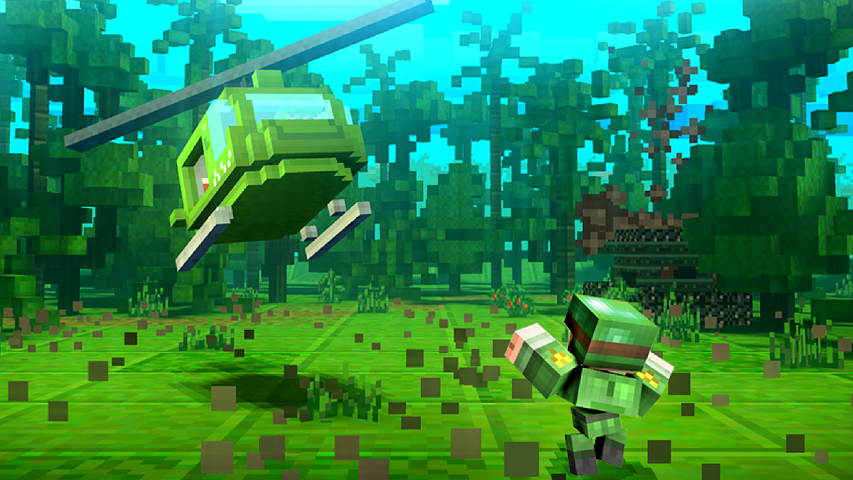How minimalism reduces the cost, what the Hungarian gaming industry is today, why paid games are more often promoted in the App Store – we talked about this and much more with Invictus Games CEO Tamas Kozak.
Illustration: Dustoff Vietnam
Hello, Tamas! Please tell us first about the Invictus Games team. Why did they start developing mobile games?
Tamas Kozak
First of all, hello to every App2Top reader!
Invictus Games is the oldest Hungarian game studio. We have been making games since the mid-90s, have developed a lot of racing PC titles, we are especially proud of Insane, which we worked on together with Codemasters, and Street Legal, created together with Activision.
Regarding our relationship with mobile: when iOS just became a gaming platform, we really wanted to try ourselves on it. We were amazed by the performance of the first iPhones and iPads and were happy to participate in the “gold rush” of mobile development.
You see, it was fantastic for us to see that our off-road game Insane, released in 2000, works on a device that fits in your pocket.
After that, we developed 4×4 Jam and Truck Jam for iOS. Then we released the very successful Froggy Jump and Froggy Launcher. And only after that we continued working on racing projects, including Race Of Champions and Ridge Racer, our biggest mobile hits.
But I want to note that at the moment – we are still developers of not only mobile games, we have released several titles for PC, PSP and MAC, and now we are working on two PC/MAC games that will be released as part of Steam.
Before proceeding to the discussion of the latest Invictus Games mobile games, I would like to step aside a little and talk a little about the Eastern European market. Today, in terms of development, this is a very important region. I mean, a lot of modern popular games are made right here (The Witcher, DayZ, Dead Trigger, Metro, Anomaly and many others). In this regard, the question is: why do you think this region has become a real gaming forge?
A good, but difficult question. This may be due to the fact that game development is an industry where you can achieve success without serious investment if you put all your strength, use your imagination and knowledge to the maximum.
In these countries, education was quite strong, but young talents had no other choice to stand out from the crowd, except to follow this path.
Cinema and animation require large investments and a more serious technical infrastructure, as well as constant interaction at the level of personal acquaintances with industry representatives, but the development of a game on a PC can come from anywhere in the world, only a computer and your talent are needed, nothing else.
Could you tell us directly about the Hungarian industry? What is she like today?
Unfortunately, the golden age of PC development in Hungary has passed, large studios like Digital Reality, Black Hole, Stromregion have closed offices.
Photo: freeimages.com
There are several talented independent teams, we have Gameloft working in Bucharest, but it seems to me that we are now seeing big changes in the local gaming industry. PC and console development should return to our country, because small independent teams will not be able to survive in the crowded world of mobile app stores.
In the meantime, yes, it’s bad that we don’t have big international hits today, like ARMA II and DayZ from Bohemia or The Witcher from CD Project. But I really hope that Hungary will once again be famous for its AAA projects.
Let’s move on to your Dustoff Vietnam, which RedBull named the best independent iOS game of 2014. I really liked the game, it reminded me of Jungle Strike, but frankly it’s not clear why, in terms of design, the team was based on the graphic style of Minecraft?
From the first moment of development, we knew that the game should be minimalistic in terms of game design and should be built from three-dimensional blocks. We were only choosing between the Minecraft style with textures in low resolution and the style without textures that was used in Crossy Road.
Why didn’t we choose the Crossy Road style? Everything is simple. As part of Minecraftvisualization, we could add small details to the faces and clothes of soldiers using only textures. That was the only reason.
If you had chosen a non-minimalist style, would the project have cost more?
More realistic and more detailed styles, within which we have worked a lot creating racing games, require much more attention to detail in every aspect of development, and this applies not only to art, but also to gameplay.
Within the framework of the minimalism we chose, we could reduce the number of features. For example, we didn’t have to draw how people climb into a helicopter, how realistic they are animated, we didn’t have to worry about water and trees being dispersed by air currents when the helicopter landed.
Dustoff Vietnam
AI with this approach can be simpler, game tasks are shorter and easier to complete. So if we were making a game with more details, we would have to add more details. But we wanted a small game for a couple of minutes of intense gameplay.
After Flappy Bird, many developers began to believe that a good game is a difficult game. But there are about 1 billion mobile players in the world and for most of them games are something new. Who should the developers focus on in such a situation? On hardcore, casual, choose some kind of compromise?
There is a huge demand for both casual and hardcore games, because there are hundreds of millions of players on both sides. Developers only have to find their audience and work with it. I believe that if developers do their job right, they can find a huge audience in any game genre and game style. Any style, any approach can work – the main quality of performance, only this matters.
And why did you make your game so difficult?
Is Dustoff Vietnam complicated? My five-year-old son easily passes all the levels of the current version of the game.
Seriously, I get the question. On iOS, we still have a “professional” control model, within which your helicopter can easily turn over if you do not constantly counteract this. Such a management model initially seemed simple to us, but then it turned out that it was very difficult for many to cope with such a UI. We will soon release an update with a lot of new features, with localization and the ability to choose between amateur and professional control methods (and the former will work by default) so that a wider audience can enjoy the game, but at the same time we leave the old control model for those hardcore players who want to get full control over by helicopter.
Today, most games are distributed under the free-to-play model, why didn’t you take a similar step within the framework of Dustoff Vietnam?
In a sense, we are tired of dealing with shareware games, which these days are constantly trying to get players to purchase something so that they can go further, otherwise they will lose. Freemium today, rather, should be called paymium, and we just didn’t want to go in this direction. There are no ads in our game, there is no IAP – and for your dollar you get all the game content.
Another reason is that today it is much more difficult to maintain a position in the free than in the paid top. We have several free and paid projects behind us, and we have achieved more success precisely within the framework of the paid model.
It began to seem to me that Apple has been promoting paid titles more and more actively lately. Is this the case, in your opinion, and if so, why does Apple act in this way?
Yes, from an observer’s point of view, it may look like Apple is promoting more paid games than free ones, but it seems to me that all this can easily be explained by the fact that the quality of paid games is higher than that of most free ones. But pay attention that Apple earns more on shareware games. To understand this, just look at the box office charts. 95% of them are occupied by freemium projects.
Penultimate question: Invictus Games is currently working on a big hardcore game for car enthusiasts – Street Tuning Evolution. Why did the team return to such projects?
For a long time we were famous for racing projects. The Street Legal and Street Legal Racing Redline games released by Activision, in which the player could assemble, configure, and then drive and break his own car, were very popular. Moreover, even now, 10 years after the release, the community of players is creating new cars and mods for the game. Actually, that’s why we decided.
To finish the game, you started your own Kickstarter campaign, but closed it ahead of time. What happened?
Here’s the story. After a long discussion with the community manager streetlegalmods.com we followed his advice and launched a Kickstarter campaign to sponsor the continuation of our title.
Unfortunately, people not from the community did not understand the main message of the campaign: looking through old videos and screenshots of the original project, they thought that we wanted to sell them a 10-year-old game.
Therefore, we closed the Kickstarter campaign and in a few weeks made a prototype of a new game using Unreal Engine 4. And they restarted the collection of money already on the basis of IndieGogo with PayPal support.
And I really hope that the community and everyone who sees these videos will find the project interesting.
Good luck! Thanks for the interview!




